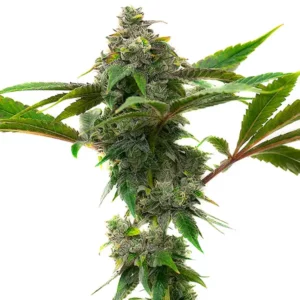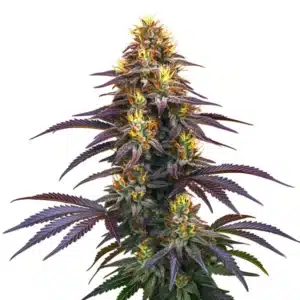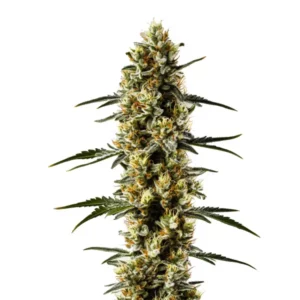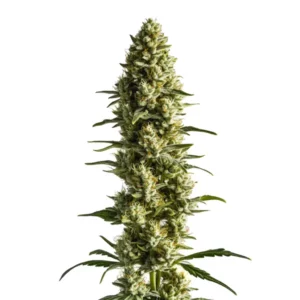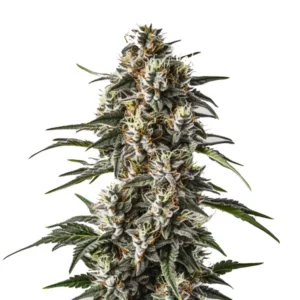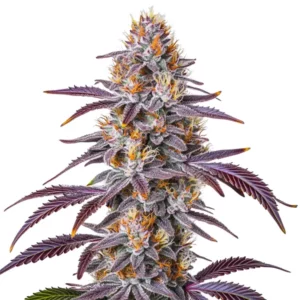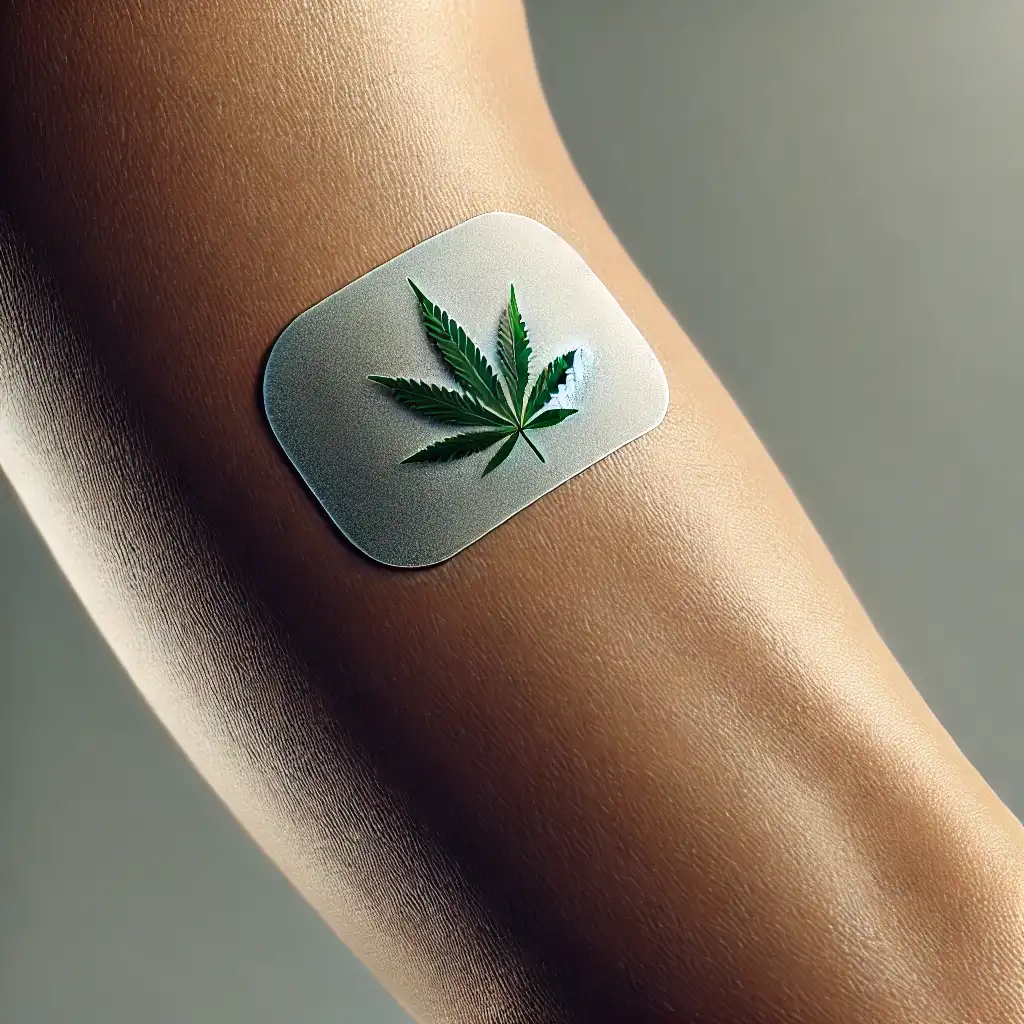
The Revolutionary Potential of the Transdermal Cannabis Patch
What Is a Transdermal Cannabis Patch?
How Transdermal Patches Work
A transdermal cannabis patch is a cutting-edge way to deliver cannabis’s benefits directly into your bloodstream. Unlike traditional methods like smoking or edibles, transdermal patches provide a steady release of cannabinoids through your skin. This method uses the body’s largest organ, the skin, as the gateway for cannabinoids. The patch contains a specific dose of cannabinoids THC, CBD, or a blend which are slowly absorbed over time.
The patch works by utilizing a carrier agent that penetrates the skin. This agent helps cannabinoids bypass the digestive system and liver, leading to faster and more efficient absorption. As the cannabinoids enter the bloodstream, they provide consistent relief without the peaks and valleys often associated with other consumption methods. This steady release is particularly beneficial for managing chronic conditions, where maintaining a stable level of cannabinoids can make all the difference.
Recommended Strains
CBD Black Diesel (1:1)
|
|
CBD | 6% – 8% (Low) |
|
|
Type | CBD Feminized |
|
|
Yield | High |
|
|
Phenotype | 40% Indica / 60% Sativa |
CBD Black Domina (1:1)
|
|
CBD | 10% (Medium) |
|
|
Type | CBD Feminized |
|
|
Yield | High |
|
|
Phenotype | 80% Indica / 20% Sativa |
Differences Between Transdermal Patches and Other Cannabis Products
Transdermal cannabis patches offer distinct advantages over other cannabis products. When you smoke or vape cannabis, the effects are almost immediate, but they also fade quickly. Edibles, on the other hand, can take up to two hours to kick in and can last much longer. However, edibles are metabolized by the liver, which can alter the effects of THC, sometimes making them unpredictable.
Transdermal patches provide a middle ground. They offer the convenience of edibles with the steadiness of topicals. Unlike topicals that only affect the skin or localized areas, transdermal patches deliver cannabinoids systemically. This means they can affect your entire body, providing relief wherever it’s needed. Moreover, because the cannabinoids bypass the digestive system, you avoid any potential stomach discomfort or first-pass metabolism that can occur with edibles.
The Evolution of Transdermal Delivery Systems
The concept of transdermal delivery isn’t new, but applying it to cannabis is a revolutionary development. Transdermal patches have been used for decades in medicine, delivering drugs like nicotine, hormone therapy, and pain relievers. The cannabis industry has adapted this technology to meet the specific needs of cannabis users.
The development of transdermal cannabis patches involved overcoming several challenges, particularly in ensuring that cannabinoids could be absorbed effectively through the skin. Early patches struggled with inconsistent absorption rates. However, advances in formulation techniques and carrier agents have made modern transdermal cannabis patches highly effective. These innovations have made transdermal patches one of the most promising ways to use cannabis for both medical and recreational purposes.
Promos & Deals
Benefits of Using Transdermal Cannabis Patches

Consistent and Controlled Dosing
One of the most significant advantages of using a transdermal cannabis patch is the ability to control dosing precisely. With other methods, it can be challenging to achieve a consistent dose. For example, the effects of smoking can vary based on how deeply you inhale or the potency of the cannabis. Edibles can also vary in strength depending on how they are made and the individual’s metabolism.
Transdermal patches remove this variability by providing a pre-measured, controlled dose of cannabinoids. Once applied, the patch delivers a steady dose over several hours, ensuring that you receive the same amount of cannabinoids throughout the day. This consistency is especially important for patients who rely on cannabis for managing chronic pain, anxiety, or other conditions. By maintaining a stable level of cannabinoids in the bloodstream, transdermal patches can help prevent the peaks and troughs associated with other methods, leading to more effective symptom management.
Discreet and Convenient Use
Another key benefit of transdermal cannabis patches is their discreet and convenient nature. For many users, smoking or vaping cannabis can be impractical or undesirable in certain situations. The smell of smoke or vapor, the need for paraphernalia, and the potential for drawing unwanted attention can all be concerns. Edibles, while discreet, can take a long time to take effect and may not be suitable for everyone, especially those with dietary restrictions.
Transdermal patches offer a solution to these issues. They are small, discreet, and easy to apply, making them ideal for use in public or at work. The patches are odorless and can be worn under clothing, allowing users to benefit from cannabis without anyone knowing. Additionally, because they provide a slow, steady release of cannabinoids, there’s no need to reapply them frequently, adding to their convenience.
Long-Lasting Effects Compared to Other Methods
One of the standout features of transdermal cannabis patches is their long-lasting effects. While the effects of smoking or vaping typically last for 2-4 hours, and edibles can last up to 8 hours, transdermal patches can provide relief for 8-12 hours or even longer. This extended duration makes them particularly useful for managing conditions that require long-term symptom control, such as chronic pain, arthritis, or anxiety disorders.
The prolonged effects of transdermal patches also mean that users don’t have to worry about re-dosing throughout the day. This can be especially beneficial for those with busy schedules or those who need consistent relief overnight. With a single application in the morning or before bed, you can ensure that your symptoms are managed continuously, providing peace of mind and uninterrupted relief.
How Transdermal Cannabis Patches Are Made
Key Ingredients in Transdermal Patches
The effectiveness of a transdermal cannabis patch relies on its formulation, which includes several key ingredients. First and foremost are the cannabinoids themselves THC, CBD, or a combination of both. These cannabinoids are carefully measured to ensure consistent dosing in each patch. Depending on the intended use, the ratio of THC to CBD can be adjusted to provide different effects, such as pain relief, relaxation, or anti-anxiety benefits.
In addition to cannabinoids, transdermal patches also contain permeation enhancers. These agents help cannabinoids penetrate the skin and reach the bloodstream more effectively. Common permeation enhancers include substances like ethanol, isopropyl myristate, and DMSO (dimethyl sulfoxide). These ingredients work by temporarily altering the skin’s barrier function, allowing the cannabinoids to pass through more easily.
Lastly, the patch’s adhesive layer is crucial. It must be strong enough to keep the patch securely in place for several hours while being gentle enough not to irritate the skin. This adhesive is often infused with additional compounds that help the cannabinoids penetrate the skin more effectively.
Permeation Enhancers
Permeation enhancers play a vital role in the effectiveness of transdermal cannabis patches. The skin is naturally designed to keep out foreign substances, which is why simply applying cannabis oil to the skin doesn’t result in significant absorption. Permeation enhancers work by temporarily disrupting the skin’s outer layer, allowing the cannabinoids to pass through and enter the bloodstream.
Different enhancers work in various ways. Some, like ethanol, increase the solubility of cannabinoids, making them more easily absorbed. Others, like DMSO, increase the permeability of the skin by altering its lipid structure. The choice of permeation enhancer depends on the specific formulation of the patch and the desired absorption rate. A well-formulated transdermal patch will use a combination of enhancers to ensure that the cannabinoids are delivered efficiently and effectively.
Ensuring Potency and Purity in Patch Manufacturing
Ensuring the potency and purity of transdermal cannabis patches is critical to their effectiveness. The manufacturing process begins with high-quality cannabis extracts, which are carefully tested for potency and purity. These extracts are then combined with other ingredients to create a consistent formulation.
During production, strict quality control measures are implemented to ensure that each patch contains the correct dose of cannabinoids. This involves precise measuring and mixing of ingredients, as well as testing the final product for consistency. Additionally, manufacturers must ensure that the patches are free from contaminants, such as pesticides, heavy metals, and residual solvents. This is particularly important for transdermal patches, as any contaminants could be absorbed directly into the bloodstream.

Therapeutic Uses of Transdermal Cannabis Patches
Pain Management and Chronic Conditions
Transdermal cannabis patches are particularly effective for managing pain and chronic conditions. The steady release of cannabinoids provides long-lasting relief, making them ideal for conditions like arthritis, fibromyalgia, and neuropathy. For chronic pain sufferers, maintaining a consistent level of cannabinoids in the bloodstream can be crucial for preventing breakthrough pain.
The patches are also beneficial for those with conditions that make oral consumption difficult or uncomfortable. For example, patients with gastrointestinal issues may find that transdermal patches provide relief without exacerbating their symptoms. Additionally, because the cannabinoids bypass the digestive system, the effects are often more predictable and easier to manage, making transdermal patches a preferred option for many patients.
Managing Anxiety and Stress
Anxiety and stress are common conditions that can be effectively managed with transdermal cannabis patches. The consistent dosing provided by the patches helps maintain stable levels of cannabinoids in the bloodstream, which can be particularly helpful for individuals who experience anxiety throughout the day. Unlike other methods that can cause spikes in cannabinoid levels, potentially leading to increased anxiety or paranoia, transdermal patches offer a more controlled release.
CBD-rich patches, in particular, are popular for managing anxiety and stress. CBD is known for its calming effects without the psychoactive properties of THC, making it an excellent choice for those looking to manage their anxiety discreetly and effectively. For individuals who need to stay focused and functional, a CBD-dominant transdermal patch can provide the benefits of cannabis without the high.
Using Patches for Sleep Disorders
Sleep disorders, including insomnia, can be significantly improved with the use of transdermal cannabis patches. Many people struggle with falling or staying asleep due to chronic pain, anxiety, or other conditions. Transdermal patches offer a solution by delivering cannabinoids that help promote relaxation and reduce discomfort, leading to better sleep quality.
THC-dominant patches are particularly effective for sleep, as THC has sedative properties that can help individuals fall asleep more easily. Additionally, the long-lasting effects of the patch mean that it can help maintain sleep throughout the night, reducing the chances of waking up due to pain or anxiety. For those with more severe sleep disorders, a combination of THC and CBD in a transdermal patch can offer a balanced approach to improving sleep without the need for pharmaceutical interventions.
How to Choose the Right Transdermal Cannabis Patch
THC vs. CBD Patches
Choosing the right transdermal cannabis patch depends largely on your specific needs and desired effects. THC and CBD are the two primary cannabinoids used in these patches, each offering different benefits. THC is known for its psychoactive effects, making it effective for pain relief, muscle relaxation, and promoting sleep. However, it can also cause euphoria, which may not be desirable for everyone.
On the other hand, CBD is non-psychoactive and is widely used for its calming and anti-inflammatory properties. CBD patches are an excellent choice for managing anxiety, stress, and chronic inflammation without the high associated with THC. Some patches combine both THC and CBD, providing a balanced effect that harnesses the therapeutic benefits of both cannabinoids. The differences between these patches allows you to select the one that best meets your needs.
Matching Patches to Your Medical Needs
When selecting a transdermal cannabis patch, it’s important to match the patch to your specific medical needs. If you’re dealing with chronic pain, a THC-dominant patch might be the most effective, as THC is a powerful analgesic. For anxiety or stress, a CBD-dominant patch might be more appropriate, providing calming effects without the psychoactivity of THC.
Additionally, consider the duration of relief you need. Some patches are designed to last 8-12 hours, while others may offer relief for up to 24 hours. If you need round-the-clock symptom management, a longer-lasting patch might be more suitable. For those new to cannabis or sensitive to its effects, starting with a lower-dose patch and gradually increasing as needed can help avoid any unwanted side effects.
Considering Patch Strength and Duration
Transdermal cannabis patches come in various strengths, typically ranging from 10mg to 100mg or more of cannabinoids. The right strength for you will depend on your tolerance, the severity of your symptoms, and your experience with cannabis. For beginners, starting with a lower-dose patch is advisable, as this allows you to gauge your body’s response before moving to a higher strength.
The duration of the patch is also an important consideration. Some patches are designed to release cannabinoids over 12 hours, while others may provide relief for 24 hours or more. Longer-lasting patches are ideal for conditions that require continuous management, such as chronic pain or severe anxiety. However, if you only need relief during specific parts of the day, a shorter-duration patch may be more appropriate.
How to Apply and Use a Transdermal Cannabis Patch
Step-by-Step Guide to Applying a Patch
Applying a transdermal cannabis patch is simple and straightforward, but following the correct procedure ensures maximum effectiveness. Start by choosing a clean, dry area of skin, free from any lotions, oils, or hair. Common application sites include the inside of the wrist, upper arm, or lower back. These areas have thinner skin, which facilitates better absorption.
Once you’ve chosen the site, remove the patch from its packaging and peel off the protective liner. Carefully apply the sticky side of the patch to your skin, pressing down firmly to ensure good contact. Make sure the patch is smooth and free of any wrinkles or air bubbles, as these can reduce the effectiveness of the patch. After applying, wash your hands to remove any residue.
Best Areas on the Body for Patch Placement
The placement of your transdermal cannabis patch can impact its effectiveness. The best areas for application are those with thin skin and good blood flow. Popular sites include the inside of the wrist, upper arm, shoulder blade, and lower back. These areas allow for efficient absorption of cannabinoids into the bloodstream.
Avoid areas with thick skin or excessive hair, as these can hinder absorption. It’s also advisable to rotate the application site each time you use a patch to avoid skin irritation. For example, if you applied the patch to your left wrist today, consider using your right wrist or upper arm the next time. Rotating sites also ensures that one area of skin isn’t exposed to the patch’s adhesive for prolonged periods, which can cause irritation.
Tips for Maximizing Patch Effectiveness
To get the most out of your transdermal cannabis patch, there are a few tips to keep in mind. First, ensure that the application site is clean and dry. Any oils, lotions, or sweat on the skin can interfere with the patch’s adhesion and absorption. It’s also important to apply the patch in a calm, relaxed environment to avoid sweating, which can reduce its effectiveness.
Another tip is to avoid exposing the patch to excessive heat, such as from hot showers, saunas, or direct sunlight. Heat can increase the rate of cannabinoid release, potentially leading to a quicker onset of effects than desired. Finally, if you need to remove the patch before its duration is complete, do so gently to avoid skin irritation. Fold the patch in half with the adhesive sides together and dispose of it properly.
Safety Considerations for Transdermal Cannabis Patches

Possible Side Effects and How to Manage Them
While transdermal cannabis patches are generally safe, it’s important to be aware of potential side effects. Some users may experience mild skin irritation at the application site, including redness, itching, or a rash. To minimize this risk, choose a different application site with each use and ensure the skin is clean and dry before applying the patch.
Other potential side effects include dizziness, dry mouth, or lightheadedness, especially if you’re using a patch with a high THC content. If you experience these symptoms, remove the patch and consult with a healthcare provider if necessary. It’s also advisable to start with a low-dose patch to gauge your tolerance before moving on to higher strengths.
Who Should Avoid Using Transdermal Patches?
While transdermal cannabis patches are effective for many people, they may not be suitable for everyone. Individuals with certain skin conditions, such as eczema or psoriasis, should use caution, as the adhesive or the patch itself could exacerbate symptoms. Additionally, those with known allergies to any of the patch’s ingredients should avoid use.
Pregnant or breastfeeding women should consult with their healthcare provider before using transdermal cannabis patches, as the effects of cannabinoids on pregnancy and lactation are not fully understood. It’s also important to consider any medications you’re currently taking, as cannabinoids can interact with certain drugs. If in doubt, seek medical advice to ensure that a transdermal cannabis patch is the right choice for you.
Interactions with Other Medications
Cannabinoids, particularly THC and CBD, can interact with other medications, potentially altering their effectiveness. For example, both THC and CBD can inhibit the enzyme cytochrome P450, which plays a key role in metabolizing many medications. This inhibition can lead to higher levels of certain drugs in the bloodstream, increasing the risk of side effects.
If you’re taking blood thinners, antidepressants, or medications for anxiety, it’s crucial to consult with a healthcare provider before using a transdermal cannabis patch. Your doctor may need to adjust your medication dosage to account for potential interactions. It’s also important to inform your healthcare provider of any other supplements or over-the-counter medications you’re taking, as these can also interact with cannabinoids.
Comparing Transdermal Patches to Other Cannabis Delivery Methods
Patches vs. Edibles: Which Is More Effective?
When comparing transdermal patches to edibles, each method has its advantages. Edibles are a popular choice for those who prefer a discreet and tasty way to consume cannabis. They come in various forms, including gummies, chocolates, and baked goods, offering a wide range of options. However, edibles can take anywhere from 30 minutes to two hours to take effect, depending on your metabolism and whether you’ve eaten recently.
Transdermal patches, on the other hand, provide a more controlled and consistent release of cannabinoids. While they don’t offer the same flavor experience as edibles, they do eliminate the variability associated with digestion. Patches deliver cannabinoids directly into the bloodstream, bypassing the liver, which can alter the effects of THC. For those seeking steady, long-lasting relief without the unpredictability of edibles, transdermal patches are an excellent option.
Patches vs. Smoking or Vaping: Health and Efficacy
Smoking and vaping are among the most common methods of consuming cannabis, offering immediate effects that are easy to control. However, these methods also come with potential health risks, particularly for the lungs. Smoking cannabis involves inhaling combusted plant material, which can contain harmful toxins and irritants. Vaping, while generally considered safer, still involves inhaling heated oils or concentrates, which can cause lung irritation.
Transdermal patches offer a healthier alternative by providing the benefits of cannabis without any inhalation. This makes them ideal for individuals with respiratory issues or those who want to avoid the potential risks associated with smoking or vaping. Additionally, while the effects of smoking or vaping are short-lived, typically lasting only 2-4 hours, transdermal patches provide steady, long-lasting relief for 8-12 hours or more.
Patches vs. Topicals: When to Choose Each Method
Topicals and transdermal patches both involve applying cannabis products to the skin, but they serve different purposes. Topicals, such as creams, balms, and lotions, are designed for localized relief. They are absorbed into the skin but do not enter the bloodstream, making them effective for treating specific areas of pain, inflammation, or skin conditions.
Transdermal patches, however, deliver cannabinoids systemically, meaning they enter the bloodstream and affect the entire body. This makes patches a better choice for conditions that require full-body relief, such as chronic pain, anxiety, or insomnia. If you need localized relief for a sore muscle or joint, a topical may be sufficient. However, if you require long-lasting, systemic relief, a transdermal patch is likely the better option.





